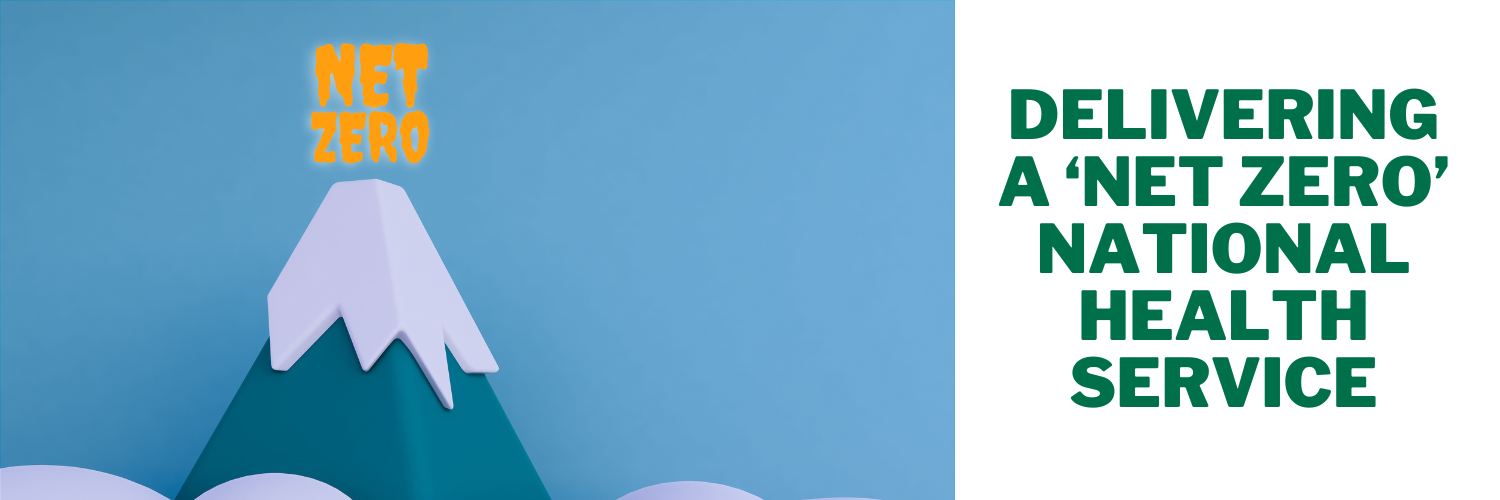Delivering a Net-Zero National Health Service
Posted in: Helping Harry's Planet 13th September 2022
A look at the “Greener NHS programme”.
First of all, what does the term ‘net-zero’ actually mean? You could ask ten people and probably get ten differing answers. Here’s the exact definition, courtesy of the Office for National Statistics.
“The total greenhouse gas emissions are equal to or less than the emissions removed from the environment. This can be achieved by a combination of emission reduction and emission removal.”
I am sure you were aware of that anyway. You’re probably also aware that the UK now has policies and proposals for decarbonising all sectors of the UK economy to meet the net zero target by 2050.
The UK won’t achieve that without the co-operation of Europe’s largest employer, the NHS.
So not surprisingly, the NHS now has its own policies and proposals for decarbonising, a road map to get the organisation to net-zero five years before the rest of the UK as a whole.
2045 is the mountain peak of net-zero, right now we’ve just started out on the journey towards base-camp.
And right now, base camp looks to be in view. In June this year it was announced that every NHS trust in England has published plans to reduce carbon by 1 million tonnes in the next 3 years. That’s the equivalent of taking 520,000 cars off the road.
A very impressive statistic, but those numbers are just scratching at the surface.
The NHS is the world’s first national health system to commit to net-zero targets, the absolute summit and ambition for carbon reduction, but as with all expeditions there will be milestones along the way. Unlike the 2045 summit, the first milestones are just around the corner.
Decarbonising the supply chain is a key component of the programme, it commits the NHS to net-zero carbon emissions by 2040 on the things that it controls and by 2045 on the things that it doesn’t control but has influence over – such as goods and services by partners and suppliers. That includes Valley Northern and most likely your organisation as well.
Let’s take a look at a couple of the milestones.
- “From April 2027: all suppliers will be required to publicly report targets, emissions and publish a carbon reduction plan for global emissions aligned to the NHS net zero target, for all of their Scope 1, 2 and 3 emissions.”
So in other words, if your business, either as a supplier or consumer, falls within the NHS supply chain, this applies to you.
Your publicly reported targets and emissions need to be aligned to the NHS target which is a substantial mini-summit in itself:
- “For the emissions we can influence (our NHS Carbon Footprint Plus), we will reach net zero by 2045, with an ambition to reach an 80% reduction by 2036 to 2039.”
It will become necessary for every company to calculate their greenhouse gas emissions and then set their own targets on a glide-path aligned to the NHS. A publicly reported glide-path of 12 years from 2027.
We’ve yet to see the fine-print here, it will be hoped that previous efforts to reduce greenhouse gasses will be held in good stead in the reporting, indeed an early pilot has seen 27 suppliers voluntarily share their plans on carbon reduction, way ahead of time.
Scope 1, 2 and 3 emissions – what are they?
Scope 1 are direct emissions caused by your company. For example, your electricity usage on-site.
Scope 2 are indirect emissions caused by the purchasing of energy. E.g. how was the electricity generated and what emissions did it create?
Scope 3 are indirect emissions from the running of your business. A good example of this would be emissions caused by employees commuting to work.
From April 2028 there will be new requirements on actual products. The exact scope and methodology has yet to be hammered out, but we can take a guess as to the considerations. It’s likely that the supply chain will need to report upon how much carbon was released in the creation and disposal of all products. Pharmaceuticals produce greenhouse gasses throughout their life cycle by means of manufacturing, procurement, transportation, packaging, disposal through incineration and the use of the drugs themselves.
It is of course the packaging to which you will turn to Valley Northern for help. The packaging that you use (and how you use it) will have a direct impact upon your efforts to drive down your own carbon footprint.
Pharmaceutical Packaging
Our role at Valley Northern couldn’t be clearer. We’ve got to march up the mountain with you, like every other company that does business with the NHS. We’ve got to assess our greenhouse gas emissions, monitor them and reduce them, in line with the NHS programme.
But it’s through the pharmaceutical packaging products themselves where we will have an opportunity of making the biggest impact.
Our work to deliver packaging that reduces carbon emissions, and other environmental impacts has already begun and we continue to innovate.
There’s no waiting around for 2027 to arrive. We’re already working on packaging solutions to help you now and in the future, always with the sustainability principles of re-usability, recyclability and recovery in mind. We expect to play a key role in the reduction of green-house gasses through our packaging products which will in-turn help our customers to achieve their own carbon reduction goals.
A walk of a thousand miles begins with just one step and that step has already been taken. Now we’re on the journey to the summit and we’ll be with you all the way.
You can find out more by downloading the .pdf ‘Delivering a ‘Net Zero’ National Health Service’.








